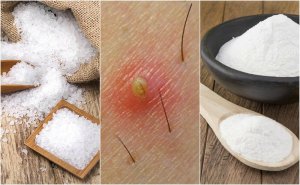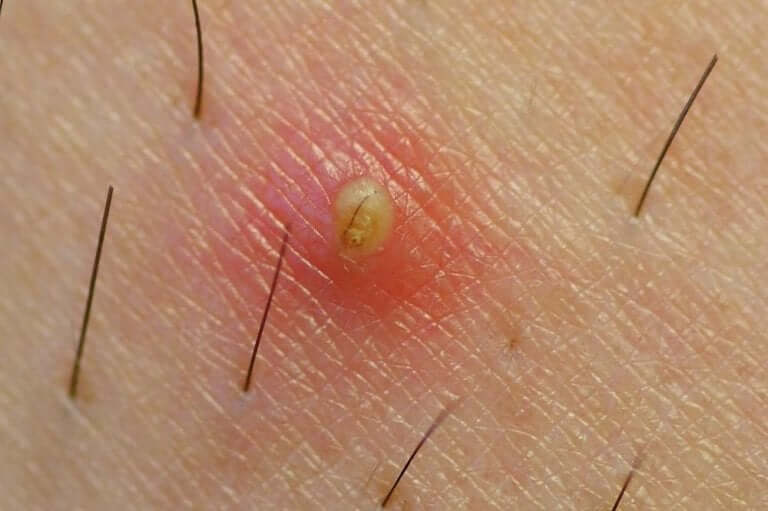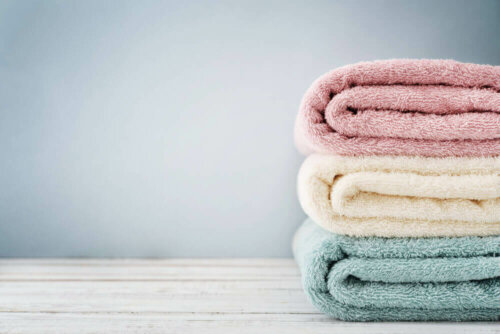Five Natural Solutions for Ingrown Hairs


Reviewed and approved by the doctor Karla Henríquez
This problem is caused by an obstruction of the hair follicles, which accumulate dead cells and sebum residues on their surface. However, there are natural solutions to remove ingrown hairs. Let’s see what they are.
Are ingrown hairs harmless?
Anybody can have ingrown hairs at any given time during their lifetime, especially if a person has very curly hair or often skips past the before and after steps when shaving.
Though ingrown hairs are harmless and only appear from time to time, they can cause inflammation, reddening, and fill with pus, making them uncomfortable and unsightly.
The causes of ingrown hairs

Ingrown hairs form when the hairs, instead of growing straight and outwards, can’t break through the skin barrier. This can occur because of the dead skin build-up over the hair follicle or because the hair itself is too thick and curly.
Other associated factors include:
- Plucking
- Dry shaving
- Misuse of hair removal tools or razors
- Pulling on the skin while shaving
Signs of ingrown hairs
Ingrown hairs appear in zones that you frequently shave, such as the chin, legs, and pubic region.
The main sign is a small bump that looks similar to a pimple. Inside, there’s an ingrown hair. Other problems that may result from ingrown hairs are the following:
- Pain or sensitivity
- Itching sensation
- Darkening or reddening of the skin
- Small pus-filled bumps that look similar to blisters
How to remove ingrown hairs
To remove ingrown hairs, you can first do the following.
- Wash the affected area with a little warm water.
- With a toothbrush (soft bristles), gently massage in circular motions to relieve inflammation and pain.
- Apply a chamomile compress for a few minutes.
- Take a sterilized needle and insert it under the curls of the hair, gently lifting the tips of the embedded hair.
Natural solutions for extracting ingrown hairs
Fortunately, there are natural solutions that can help remove ingrown hairs without damaging the area, according to popular wisdom. In this sense, you can resort to the following.
1. Warm compress

Applying a warm compress over the affected area can soften the tissue surrounding the inflammation, making it easier to extract ingrown hairs.
How to use it
- Submerge a small towel or cloth in hot water and apply it over the ingrown hair.
- Leave it on for 5 minutes, take it off for another 5 and apply again.
- Use this treatment several times a day until the hair is close enough to the skin’s surface.
2. Sea salt
This natural exfoliant helps remove dead skin cells on the skin’s surface, reestablishing the original function of the affected hair follicle.
It’s believed that exfoliation can also help to improve blood circulation and encourage hairs to grow normally.
How to use it
- Moisten a little sea salt with water and rub it over the affected area with a gentle massage.
- Leave it on for 5 minutes and wash it off.
- Repeat the remedy every day until the ingrown hair is gone.
Visit the article: Eight Surprising Benefits of Sea Salt
3. Apple cider vinegar

Although this hasn’t been scientifically proven, it’s believed that the organic acids found in apple cider vinegar help reduce the inflammation that results from ingrown hairs.
How to use it
- Submerge a cotton ball or swab in apple cider vinegar and apply it over the ingrown hair.
- Gently press it in and leave it to work for 5 minutes.
- Take a sterilized needle and gently insert it underneath the ingrown hair. Carefully lift the tip of the hair and extract it with a pair of tweezers.
4. Baking soda
According to popular belief, you can also use baking soda instead of vinegar. However, you should be careful with this product. This is because if you use too much or too frequently, it could burn the skin and worsen the problem.
How to use it
- Firstly, prepare a paste of baking soda and water. Then, rub it into the affected area.
- Then, leave it on for 5 minutes and wash it off.
- Finally, repeat 2 times a day for best results.
5. Black tea

Black tea contains tannic acid, which is a substance that softens skin while reducing inflammation and reddening. It’s ideal for removing ingrown hairs.
How to use it
- Firstly, submerge a black tea bag in hot water and let it steep.
- When the water cools, apply it to the affected hair follicle and leave it on for a few minutes.
- Finally, repeat 2 or 3 times a day.
Possible complications
In many cases, ingrown hairs usually heal on their own, without having to do anything and without major problems. However, in some people with sensitive skin, certain complications may appear, such as:
- Bacterial infections, by scratching or touching;
- Inflammation and redness if there’s contact with any product that causes irritation;
- Hardened scars (keloids).
What to do if these solutions for ingrown hairs don’t work
In case these solutions don’t help you to remove the ingrown hairs, the best thing to do is to go to a dermatologist. The professional will be able to provide you with the most appropriate treatment, not only depending on the ingrown hair but also on your skin type and other important factors to take into account.
In this regard, laser treatment may be considered to remove the ingrown hair at the root. However, this can cause blistering, scarring, and darkening of the skin.
On the other hand, the health professional can recommend some medications to help you with the symptoms; among these are:
- Retinoids, to remove dead skin cells;
- Anti-inflammatories: these can be steroid creams;
- Antibiotic pills or antibiotic ointment to control infections.
Precautions with ingrown hairs
Whether or not you decide to use any of these natural remedies to remove ingrown hairs, it’s advisable to stop shaving or plucking the area for a reasonable time, at least until you notice an improvement.
And remember: it’s very important to keep the area clean and dry, and avoid constantly touching it with your hands or with any instrument (tweezers, pencils, or other pointed objects).
All cited sources were thoroughly reviewed by our team to ensure their quality, reliability, currency, and validity. The bibliography of this article was considered reliable and of academic or scientific accuracy.
- Bhatia J, Gupta R, Kaur I. Dermatoscopia como herramienta auxiliar en la evaluación de foliculitis por Malassezia: estudio observacional, Actas Dermo-Sifiliográficas. 2021. https://doi.org/10.1016/j.ad.2020.05.012.
- Domínguez-Auñón J, Gamo R, Isarría M, et al. Foliculitis/seudofoliculitis abscesiforme del cuero cabelludo. Presentación de dos casos y breve revisión de la literatura. Actas Dermo-Sifiliográficas. 2004; 95(4): 231-234.
- Maldonado GCA, Lin S. Foliculitis infecciosas. (Parte I). Rev Cent Dermatol Pascua. 2014;23(3):90-98.
- Zaballos P, Ara M, Rodero J, et al. Foliculitis postdepilación por Mycobacterium chelonae Actas Dermo-Sifiliográficas. 2002; 93(4): 259-262.
- Drake D. Antibacterial activity of baking soda. Compend Contin Educ Dent Suppl. 1997;18(21):S17-21;quiz S46. PMID: 12017929.
- Grupo Español de Conservación. Ácido tánico. Disponible en: https://www.ge-iic.com/fichas-tecnicas/inhibidores-de-corrosion/acido-tanico/.
- Clínica Mayo. Vellos encarnados. Disponible en: https://www.mayoclinic.org/es-es/diseases-conditions/ingrown-hair/symptoms-causes/syc-20373893.
This text is provided for informational purposes only and does not replace consultation with a professional. If in doubt, consult your specialist.








